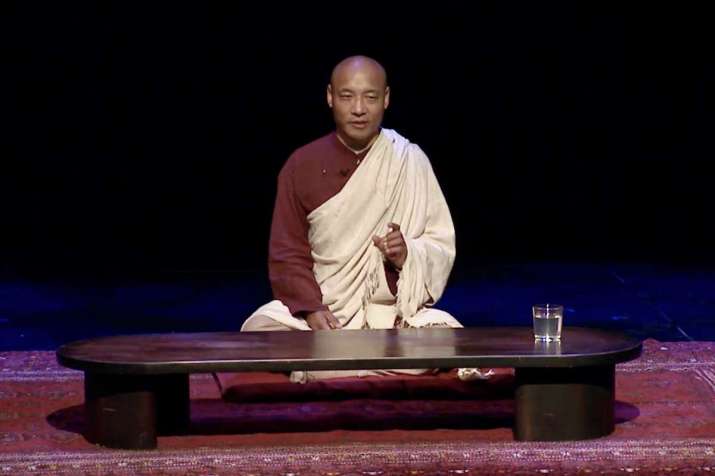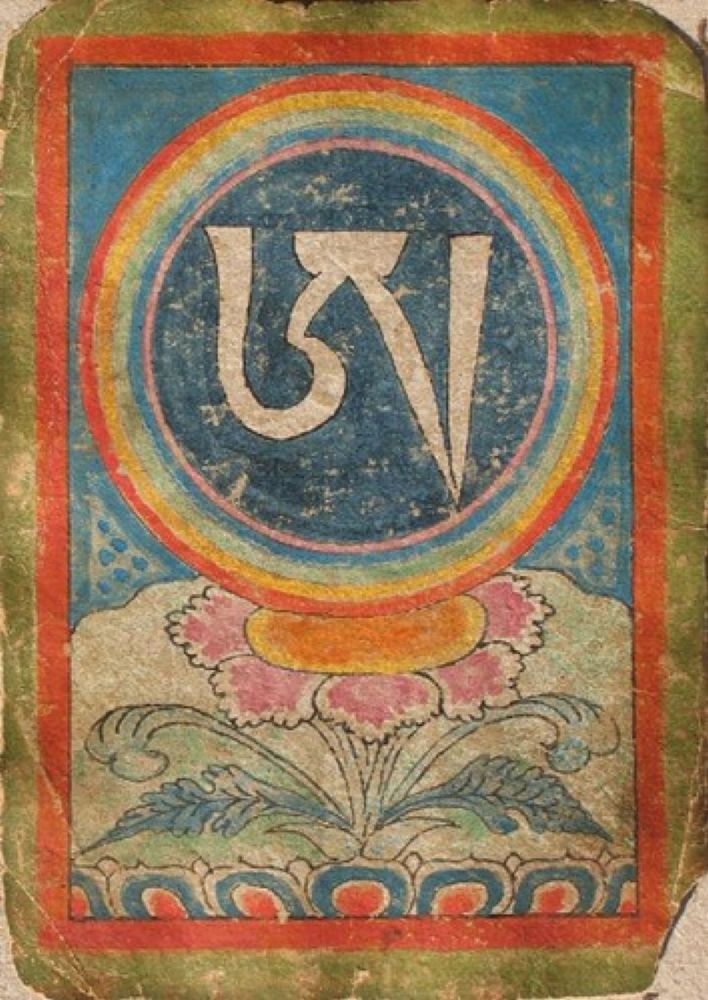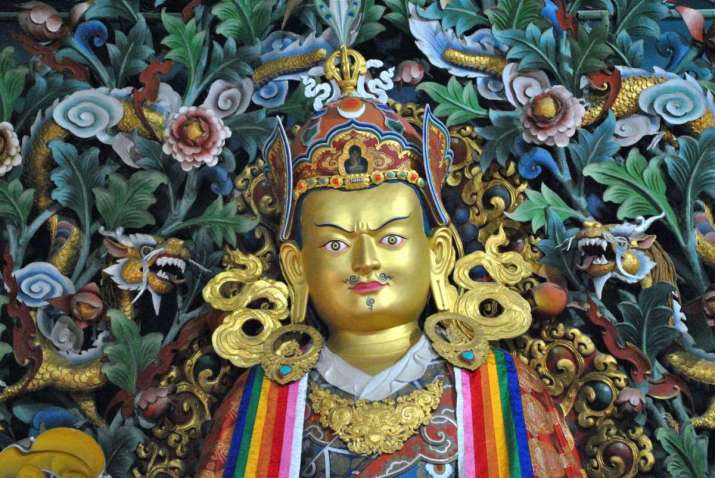FEATURES|COLUMNS|Dharma Gossip
Dzogchen: The Non-Conceptual Path to Liberation
 Anam Thubten Rinpoche. From youtube.com
Anam Thubten Rinpoche. From youtube.comMoksha is a Sanskrit term used widely in many traditions in the East. It means liberation, and the goal is attaining it through either a higher power or from individual effort. Buddhism is clear in its stance, however, that it cannot be bestowed upon us by pleasing the divine. It has to be earned through one’s own effort. This position began to receive more plaudits as the world continued to become more humanistic, secular, and rational. For many, seeking moksha is the most serious business in their life, and they’re willing to do almost anything to attain it. At some point, the whole endeavor of seeking moksha can be quite painstaking, with little success or none at all, not to mention becoming stuck in all kinds of observances and dogmas with complicated concepts. The whole thing can be an exhausting enterprise rather than like happily skipping along a flower-strewn pathway toward the great gate of moksha. Feeling such exhaustion might not be a failure; rather, it can be a blessing in disguise. It can open one’s mind to new possibilities and seeing the pitfalls of one’s spiritual path. If one is not defeated by such feelings of exhaustion, he or she can fundamentally overhaul their mental paradigm through which the very definition of moksha and the ways of finding it can be radically changed. Such change will inspire people to practice what I call the non-conceptual Dharma, such as the teachings encompassed by Dzogchen.
The non-conceptual Dharma was taught by the Buddha himself to audiences who harbored keen insight that could penetrate the depths of reality and consciousness. To others he taught a more conceptual mind-based Dharma, a spiritual path involving various rules based on the dualism of sacred versus ordinary, pure versus impure. The premise of non-conceptual Dharma is that both nirvana and samsara are purely states of mind, and one can be awakened at any given moment by just seeing the nature of one’s mind, which is already enlightened. Dzogchen can be regarded as the epitome of such non-conceptual Dharma.
Buddhist masters such as Prahevajra (also known as Garab Dorje) and Manjushrimitra (both fl. c. 55 CE) taught this non-conceptual practice in India, while Guru Padmasambhava and Vimalamitra brought the teaching to Tibet in the eighth century. Many practitioners experienced what is called sudden awakening through their teachings. There is a famous story of an old man named Mipham Gonpo who was awakened to the true nature of his mind as buddha-mind in an instant in the presence of Vairotsana, without needing complex teachings or rituals. Such sudden awakenings occurred to many through what is regarded as the blessing of the lineage: the liberating potency that a lineage possesses. What exactly is such a phenomenon? It is the power of a lineage that has been maintained by true masters who are awakened themselves and who have the skill to help others succeed in their quest for inner liberation.

The seed syllable “A” representing kadag within a thigle
representing lhun grub, symbolizing rigpa, knowledge
of the primordial ground.
It seems that the Dzogchen traditions remained quite esoteric for some time in the history of Tibet. Quite a large number of Dzogchen tantras were translated into the Tibetan language but they were not always easy to understand. Some people would not know how to summarize these ancient tantras and to put them into actual application. Then the great pandita and yogi of the 14th century, Longchenpa, wrote many texts to elucidate Dzogchen tantras through his incredible scholasticism and experience. Not only did his works make Dzogchen teachings more accessible to Tibetan people, they became the most authoritative texts on the topic. Many regard Longchenpa as the living buddha Samantabhadra.
It seems that Dzogchen has always been practiced by people in Tibet since its arrival in the new land. Yet it has been quite obscure among general Buddhists; many didn’t understand its depth and misunderstood the teaching. But there is no doubt that there have always been yogis who have understood it and become awakened. They have served as a bridge for Dzogchen to live from one generation to the next as a vibrant tradition. In the 19th century, Dzogchen became quite widespread among Tibetan Buddhists. This might have to do with the influential teacher Jigme Lingpa (1730–98), who taught Dzogchen to many important lamas. His lineage produced an entire line of Dzogchen masters, such as Dodrubchen, Patrul Rinpoche, Zhabkarpa, Lama Mipham, Khenpo Ngakchung, and many more.
Many lamas in Tibet have reservations about teaching Dzogchen formally. Some of them teach it with a great deal of caution, making sure that students have completed the Ngondro or preliminary practices before they are invited to practice Dzogchen. There are many reasons behind this. They are worried that people might misunderstand its profound and subtle meaning, or bypass the important inner work of karmic purification, the development of love and compassion and self-reflection.
 Guru Padmasambhava Rinpoche
Guru Padmasambhava RinpocheOthers believe that this is the right time to share the teaching with the masses. They see that people in today’s world are, in general, sufficiently well educated that they are able to at least conceptually understand that which goes beyond conventional religion. Many people also do not have an interest in going to a monastery for years of study and practice, which is something many did in the past. Such a way is neither feasible nor affordable for most people these days. They need a Dharma that gives them a taste of inner liberation in an immediate fashion, one that doesn’t require complex practices. They have little or zero interest in religions that promote a dualistic view toward the nature of reality.
In late 1990s, His Holiness Jigme Puntsok conducted a teaching tour in the West. During one of his lectures, he told a group of Western Nyingma practitioners that they only needed to practice Dzogchen. This was like him giving permission to Dharma teachers and practitioners in the West to practice Dzogchen. The foremost criteria for practicing Dzogchen is having a master who has experiential understanding of it from his or her own practice, rather a purely intellectual knowledge. There are perhaps many qualified masters out there who can teach Dzogchen in a way that people can experience genuine inner awakening to the true nature of the mind, which is already pure and free.
See more
Related features from Buddhistdoor Global
A Garland of Views: A Guide to View, Meditation, and Result in the Nine Vehicles – Book Review
Strand of Jewels: My Teachers’ Essential Guidance on Dzogchen – Book Review
A Tribute to Thinley Norbu Rinpoche on the Fourth Anniversary of his Parinirvana














